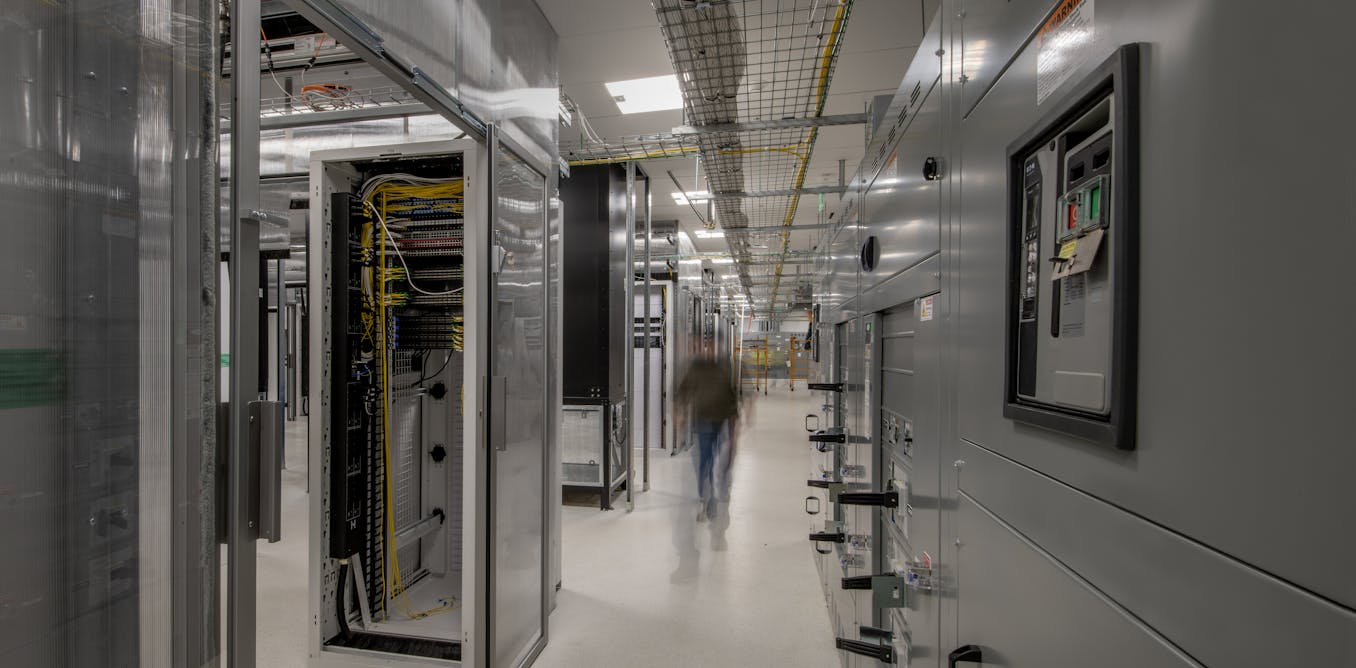In 2020, scientists detected a gas called phosphine in the atmosphere of an Earth-size rocky planet. Knowing of no way that phosphine could be produced except through biological processes, “the scientists assert that something now alive is the only explanation for the chemical’s source,” The New York Times reported. As “biosignature gases” go, the phosphine seemed like a home run.
Until it wasn’t.
The planet was Venus, and the claim about a potential biosignature in the Venusian sky is still mired in controversy, even years later. Scientists can’t agree on whether phosphine is even present there, let alone whether it would be strong evidence of an alien biosphere on our twin planet.
What turned out to be hard for Venus will only be harder for exoplanets many light-years away.
NASA’s James Webb Space Telescope (JWST), which launched in 2021, has already beamed back data on the atmospheric composition of a midsize exoplanet dubbed K2-18 b that some have interpreted—controversially—as possible evidence of life. But even as hopes for a biosignature detection soar, some scientists are starting to openly ask whether gases in the atmosphere of an exoplanet will ever be convincing evidence for aliens.
A slew of recent papers explore the daunting uncertainties in exoplanet biosignature detection. One key challenge they identify is what the philosopher of science Peter Vickers at Durham University calls the problem of unconceived alternatives. Put simply, how can scientists be sure they’ve ruled out every possible nonbiological explanation for the presence of a gas—especially so long as exoplanet geology and chemistry remain nearly as mysterious as alien life?
“New ideas are being explored all the time, and there could be some abiotic mechanism for that phenomenon that just hasn’t been conceived of yet,” Vickers said. “That’s the problem of unconceived alternatives in astrobiology.”
“It’s a bit of this elephant in the room,” said the astronomer Daniel Angerhausen of the Swiss Federal Institute of Technology Zurich, who is a project scientist on the LIFE mission, a proposed space telescope that would search for biosignature gases on Earth-like exoplanets.
If or when scientists detect a putative biosignature gas on a distant planet, they can use a formula called Bayes’ theorem to calculate the chance of life existing there based on three probabilities. Two have to do with biology. The first is the probability of life emerging on that planet given everything else that’s known about it. The second is the probability that, if there is life, it would create the biosignature we observe. Both factors carry significant uncertainties, according to the astrobiologists Cole Mathis of Arizona State University and Harrison Smith of the Earth-Life Science Institute of the Tokyo Institute of Technology, who explored this kind of reasoning in a paper last fall.
The third factor is the probability of a lifeless planet producing the observed signal—an equally serious challenge, researchers now realize, that’s tangled up in the problem of unconceived abiotic alternatives.
“That’s the probability that we argue you can’t fill in responsibly,” Vickers said. “It could almost range from anything from zero to 1.”
Consider the case of K2-18 b, a “mini-Neptune” that’s intermediate in size between Earth and Neptune. In 2023, JWST data revealed a statistically weak sign of dimethyl sulfide (DMS) in its atmosphere. On Earth, DMS is produced by marine organisms. The researchers who tentatively detected it on K2-18 b interpreted the other gases discovered in its sky to mean that the planet is a “water world” with a habitable surface ocean, supporting their theory that the DMS there comes from marine life. But other scientists interpret the same observations as evidence of an inhospitable, gaseous planetary composition more like Neptune’s.
Unconceived alternatives have already forced astrobiologists multiple times to revise their ideas about what makes a good biosignature. When phosphine was detected on Venus, scientists didn’t know of any ways it could be produced on a lifeless rocky world. Since then, they’ve identified several feasible abiotic sources of the gas. One scenario is that volcanoes release chemical compounds called phosphides, which could react with sulfur dioxide in Venus’ atmosphere to form phosphine—a plausible explanation given that scientists have found evidence of active volcanism on our twin planet. Likewise, oxygen was considered a biosignature gas until the 2010s, when researchers including Victoria Meadows at the NASA Astrobiology Institute’s Virtual Planetary Laboratory began to find ways that rocky planets could accumulate oxygen without a biosphere. For example, oxygen can form from sulfur dioxide, which abounds on worlds as diverse as Venus and Europa.
Today, astrobiologists have largely abandoned the idea that a single gas could be a biosignature. Instead, they focus on identifying “ensembles,” or sets of gases that couldn’t coexist without life. If anything can be called today’s gold-standard biosignature, it’s the combination of oxygen and methane. Methane rapidly degrades in oxygen-rich atmospheres. On Earth, the two gases only coexist because the biosphere continuously replenishes them.
So far, scientists haven’t managed to come up with an abiotic explanation for oxygen-methane biosignatures. But Vickers, Smith, and Mathis doubt that this particular pair—or perhaps any mix of gases—will ever be convincing. “There’s no way to be certain that what we’re looking at is actually a consequence of life, as opposed to a consequence of some unknown geochemical process,” Smith said.
“JWST is not a life detector. It’s a telescope that can tell us what gases are in the atmosphere of a planet,” Mathis said.
Sarah Rugheimer, an astrobiologist at York University who studies exoplanet atmospheres, is more sanguine. She’s actively looking into alternate abiotic explanations for ensemble biosignatures like oxygen and methane. Still, she says, “I would be popping open a bottle of champagne—very expensive champagne—if we saw oxygen, methane, and water and CO2” on an exoplanet.
Pouring drinks over an exciting result in private is, of course, different from telling the world they’ve found aliens.
Rugheimer and the other researchers who spoke to Quanta for this story wonder how best to talk in public about the uncertainty around biosignatures—and they wonder how swings in astrobiological opinion about a given detection might undermine public trust in science. They’re not alone in their worry. As the Venus phosphine saga moved toward a climax in 2021, NASA administrators and scientists implored the astrobiology community to establish firm standards for certainty in biosignature detection. In 2022, hundreds of astrobiologists came together for a virtual workshop to discuss the issue—though there’s still no official standard for, or even definition of, a biosignature. “Right now, I’m pretty happy that we all agreed, first of all, that this is a bit of a problem,” Angerhausen said.
Research moves ahead despite uncertainty—as it should, Vickers says. Running into dead ends and having to backtrack is natural for a fledgling field like astrobiology. “This is something that people should try to better understand about how science works overall,” Smith said. “It’s OK to update what we know.” And bold claims about biosignatures have a way of lighting a fire under scientists to falsify them, Smith and Vickers say—to go hunting for unconceived alternatives.
“We still don’t know what the hell’s happening on Venus, and so of course it feels hopeless,” said the astrochemist Clara Sousa-Silva of Bard College, an expert on phosphine who helped make the Venus detection. To her, the next step is clear: “Let’s think about Venus again.” Astronomers practically ignored Venus for decades. The biosignature controversy sparked new efforts not only to discover previously unconsidered abiotic sources of phosphine, but also to better understand our sister planet in its own right. (At least five missions to Venus are planned for the coming decades.) “I think that is also the source of hope for exoplanets.”
This article Doubts grow about the biosignature approach to alien-hunting is featured on Big Think.

The post “Doubts grow about the biosignature approach to alien-hunting” by Elise Cutts was published on 11/16/2024 by bigthink.com






































Leave a Reply